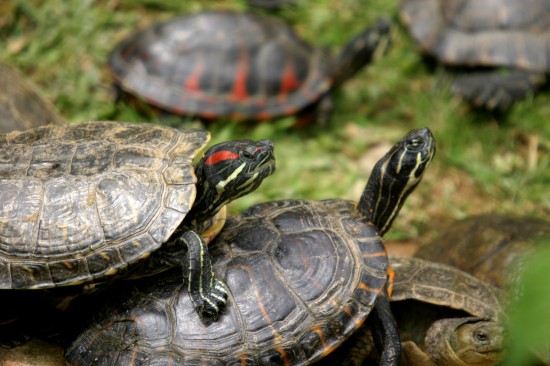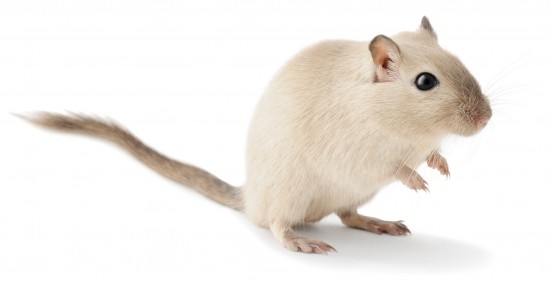

Aquatic turtles are quite robust animals, and if offered a safe clean environment they can live for decades, with some species living up to 100 years. But sadly many are raised in their millions as a part of the food trade, and many owners are given the wrong advice, and it’s no surprise that these tough little creatures frequently suffer from a variety of ailments.
If you think there is something wrong with your turtle then make an immediate appointment with a specialist reptile vet. The sooner the treatment starts the better the chances you turtle will make a full recovery, and it may be a lot cheaper for you in the long run. This list is some of the more common ailments and how to prevent them. With a little prior research your turtle can live for many decades in a healthy safe environment.
The turtle’s shell is a modified part of their skeleton, which means it’s a sensitive living part of them, and can get infections just like any other part of their body.
Shell rot is where an infection attacks the shell, often down to the bone, normally after an abrasion or cut allowing bacteria into the wound.
Shell rot is much easier (and cheaper) to prevent than cure. Water hygiene is critical for any aquatic animal; small regular water changes and adequate filtration mean that bacteria won’t be as abundant in the water. Most aquatic turtles need a big tank and a big external filter to stay healthy, the rule of thumb is 40 l per inch of shell for the tank size.
Make sure your turtle has a good basking spot to dry out on, often building a basking area above the tank to allow swimming room underneath is the best option, just make sure they can’t fall off the side. The basking spot should be 10° C warmer than the water, so a good heat bulb is needed and a light providing UVB as well to allow proper utilisation of vitamins and minerals. Remember that window glass filters out UVB light so being near a window is no use.
Avoid scratches and scrapes, turtles are often described as swimming bricks, and they certainly act like it sometimes. There is nothing like a frightened turtle firing round the tank banging off every surface to make you wonder how strong the glass is. So avoid any sharp decorations or edges in the tank, and remember they are expert climbers, when kept outside they think nothing of climbing fences and walls to escape.
One of the most common causes of death reported by rescuers, highly infectious respiratory infections can spread through a collection like wild fire. In one collection respiratory infections resulted in the loss of 30 turtles, some dying within hours of showing the first symptoms. Turtles don’t have a diaphragm, and so can’t cough mucus out of their lungs, meaning that this condition is invariably fatal if untreated. There are no home remedies to treat this and you must isolate the sick animal and take it immediately to a reptile vet.
High humidity caused by having a lid on the tank is one of the leading causes. Remove the lid and if you need to stop the turtles getting out, or other pets getting in, use mesh to allow good air flow.
Female turtles can lay eggs even if no male is present. They can retain eggs that are fertilised for a long period, or even just lay unfertilized eggs. But if they feel there is no place to safely lay their eggs they will retain them and refuse to lay, or even be unable to lay for a variety of reasons, again this needs vet treatment at the earliest signs.
Female turtles may become lethargic and refuse to eat, the change in buoyancy by carrying the eggs may lead to drowning if she is unable to walk out of the water.
If you adopt an older turtle then you can chose a male, this means he won’t lay eggs and so can’t become egg bound. Males also won’t get as large as a female. Males can fight, so it’s better to keep them on their own.
If you have a female make sure there is a dry box of sand available at all times. Some keepers incorporate this into the basking area.
Turtles need to breath air from the surface and can drown, this can happen reasonably quickly for an animal that spends so long underwater. A drowned turtle may be able to be revived.
Respiratory infections can follow drowning, so keep a close eye on them and discuss a course of antibiotics with your vet.
Drowned turtles are often trapped underwater, either by a limb becoming sucked into a powerful internal filter, becoming wedged in an ornament, or having something collapse on them.
External filters with an inlet strain are much more difficult for them to get stuck in.
Make sure all the ornaments are safe so they can’t get trapped, and nothing can fall on them.
Turtles are good climbers, and irresistible to dogs it seems, falls from tanks and on top of basking areas are a common cause of limb and shell damage, and attacks by dogs are reported every year. Other turtles have been known to kill tank mates and take serious bites out of skin and shell.
Obvious breaks and cuts, swollen limbs and the turtle refusing to use a limb.
Tank mates should be chosen with care turtles don’t need tank mates and don’t get lonely. A male and a female will lead to the male pestering the female, often to death, and two males will normally fight. Two females is the best option, but may not always get along, and remember double the turtles means double the waste.
In the wild a turtle will forage amongst the plants and mud of the bottom of a lake bed or stream looking for tasty snails and other molluscs. In the aquarium they will eat anything they can get in their mouths. Two recent new arrivals to a collection passed the foam and the lead used to weigh down aquarium plants, over 100 pieces of aquarium gravel and a piece of pink wire.
Prevention is definitely better than cure, as often this condition goes unnoticed until the turtle passes away. One of the big causes of impaction is using aquarium gravel in the tank. Replace this with sand, children’s play sand is a great alternative, but make sure you rinse it well before use. Make sure that there is nothing else in the tank that they can eat and get stuck in their digestive system.
Some research shows that turtles suffering from a calcium deficiency may be more inclined to eat gravel, make sure they have access to a calcium source such as a cuttlefish bone, and a quality source of UVB.
Like any animal turtles can get infections, which can spread throughout the body and become fatal. Septic animals often have swollen limbs and pink or even red underside and in extreme cases the shell may start to break down
Keep everything clean, over filter and do small regular water changes. Keep an eye on the turtle and get any lumps and bumps checked by a vet. Quarantine any new arrivals for at least 3 months, and feed a healthy diet.
Turtles can be fun friendly and healthy, if you make sure you give them enough space and keep everything healthy and clean. Younger turtles can be more sensitive, so it’s well worth looking for an older turtle, there are hundreds if not thousands in rescues, and for rarer species keep an eye on websites as they do appear more often than you might think.
 10 Interesting Facts About Gerbils
10 Interesting Fa
10 Interesting Facts About Gerbils
10 Interesting Fa
 Chocolates are not for your dog
Chocolates are not for your dog
Puppies are kn
Chocolates are not for your dog
Chocolates are not for your dog
Puppies are kn
 How To Work Out A Cat Or Kitten’s Age
How To Work Out A
How To Work Out A Cat Or Kitten’s Age
How To Work Out A
 Is Walking Your Cat On A Lead As Crazy As It Sounds?
Is Walking Your C
Is Walking Your Cat On A Lead As Crazy As It Sounds?
Is Walking Your C
 Keeping Your Children Safe Around Your Dog
Keeping Your Chil
Keeping Your Children Safe Around Your Dog
Keeping Your Chil
Copyright © 2005-2016 Pet Information All Rights Reserved
Contact us: www162date@outlook.com